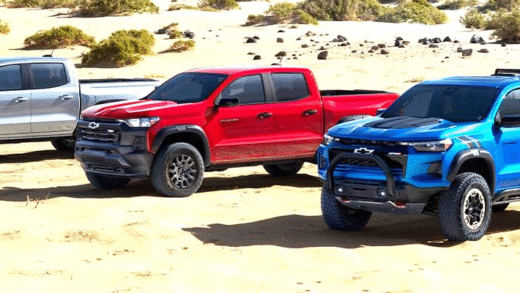This article explores downforce in NASCAR, emphasizing its importance for high-speed handling. It covers how teams create downforce, the role of aerodynamics, and how weather impacts downforce levels. Key features enhancing downforce in NASCAR cars are also discussed, providing insights into racing strategies.
What is Downforce?
Downforce in NASCAR is a crucial aerodynamic force that pushes the car down onto the track, enhancing grip and stability. This force is generated primarily through the design of the car’s body and its components, which create differences in air pressure as the vehicle moves at high speeds. Essentially, the faster the car goes, the more downforce it generates. This is vital for maintaining control, especially when navigating sharp turns at speeds exceeding 200 mph.
The Importance of Downforce in High-Speed Racing
Downforce is essential for high-speed racing as it directly influences a car’s handling characteristics. Increased downforce allows NASCAR vehicles to corner faster and more precisely, reducing the likelihood of losing traction. Without adequate downforce, a car may experience understeer or oversteer, making it difficult for drivers to maintain control. In high-speed situations, downforce can be the difference between a successful lap and a crash, highlighting its critical role in racing strategy.
How NASCAR Teams Create Downforce
NASCAR teams implement various strategies to enhance downforce on their cars. These include:
- Body Design: Teams design the car’s body with specific shapes that maximize airflow and create suction underneath.
- Wings and Spoilers: Adjustable wings and spoilers are used to optimize downforce levels based on track conditions.
- Underbody Aerodynamics: Smooth undercarriages and diffusers help manage airflow and increase downforce.
These enhancements are often tested in wind tunnels to evaluate their effectiveness before being implemented on the track.
The Role of Aerodynamics in Generating Downforce
Aerodynamics plays a pivotal role in generating downforce in NASCAR. The car’s shape is engineered to manipulate airflow around and underneath it, creating a pressure differential. This aerodynamic design reduces drag while maximizing downforce. Key aerodynamic features include:
- Front Splitters: These elements increase downforce at the front of the car.
- Rear Spoilers: They help stabilize the car by increasing downforce at the rear.
- Side Skirts: These reduce air escaping underneath the car, enhancing downforce further.
By understanding and leveraging aerodynamics, NASCAR teams can significantly improve their cars’ performance on the track.
Downforce and Tire Grip in NASCAR
Downforce in NASCAR significantly affects tire grip, which is critical for maintaining speed and stability on the track. When a car generates sufficient downforce, it presses the tires against the asphalt, increasing friction. This enhanced grip allows drivers to take corners at higher speeds without losing control. Essentially, more downforce translates to better tire performance, which is vital for competitive racing.
Key factors influencing downforce and tire grip include:
- Weight Distribution: Proper weight distribution ensures even downforce across all tires, maximizing grip.
- Tire Design: NASCAR teams select tires that are engineered to work optimally with the downforce levels produced by their cars.
- Track Conditions: Variations in track surface, temperature, and moisture can affect how downforce translates into tire grip.
As tire grip improves with increased downforce, drivers can push their cars to the limit. However, it’s crucial to find the right balance; too little downforce can lead to skidding, while too much can cause overheating of the tires, compromising performance.
Consequences of Insufficient Downforce
Insufficient downforce in NASCAR can lead to several performance issues that can jeopardize a driver’s race. When a car lacks enough downforce, it can easily lose traction, especially during high-speed turns. This loss of grip can result in understeer or oversteer, making it challenging for drivers to maintain control.
Some consequences of insufficient downforce include:
- Increased Tire Wear: With reduced grip, tires may skid more, leading to faster degradation.
- Loss of Speed: Cars may struggle to maintain speed through corners, causing slower lap times.
- Higher Crash Risk: The likelihood of losing control increases, raising the risk of accidents on the track.
To avoid these issues, teams must carefully monitor and adjust downforce levels throughout the race, ensuring optimal performance and safety.
The Negative Impact of Too Much Downforce
While downforce is crucial for high-speed racing, too much downforce can also have negative effects. Excessive downforce may lead to a phenomenon known as “drag,” which can slow the car down on straights. This drag can counteract the benefits of downforce, causing overall performance to suffer.
Potential issues caused by excessive downforce include:
- Reduced Acceleration: Cars may struggle to accelerate out of turns due to the extra drag.
- Overheating Tires: Increased pressure on tires can lead to overheating, reducing grip and performance.
- Handling Issues: Too much downforce can make a car feel “heavy,” impacting its responsiveness.
Finding the right balance of downforce is essential for NASCAR teams, as it can make or break a race. Teams often use simulations and track testing to determine the optimal downforce settings for different racing conditions.
Common Features of NASCAR Cars that Enhance Downforce
Downforce in NASCAR cars is enhanced by several key features that are designed to optimize airflow and stability. Understanding these features is essential for grasping how teams achieve competitive advantages on the track. Here are some common attributes:
- Front Splitters: These components extend from the front of the car and help to create downforce by directing air upward, thereby increasing pressure underneath the car.
- Rear Spoilers: Positioned at the back, spoilers are adjustable and help to create a downward force, stabilizing the car at high speeds.
- Side Skirts: These elements reduce the amount of air that escapes underneath the car, effectively increasing downforce by keeping the airflow attached to the car’s body.
- Diffusers: Located at the rear, diffusers expand airflow as it exits the car, creating lower pressure and increasing downforce at the back end.
- Body Shape: The overall design of the car, including its aerodynamic contours, is engineered to minimize drag while maximizing downforce.
These features work together to enhance a NASCAR vehicle’s performance, allowing it to maintain grip and speed on the track. Teams continuously modify these elements to adapt to different racing conditions and maximize their effectiveness.
Weather Effects on Downforce in NASCAR Racing
Weather plays a significant role in influencing downforce levels in NASCAR racing. Various atmospheric conditions can alter how downforce affects a car’s performance. Here are some key weather-related factors:
- Temperature: Hot weather can reduce air density, which in turn diminishes downforce. As the temperature rises, teams may need to adjust their aerodynamic setups to maintain optimal performance.
- Humidity: High humidity can increase air density, potentially enhancing downforce. However, it can also affect tire grip, making it essential for teams to find the right balance.
- Rain: Wet conditions drastically alter the track surface and tire performance. While downforce remains critical, teams must focus on adapting their setups for wet conditions, which may include altering wing angles or tire choices.
- Wind: Strong winds can disrupt the airflow over the car, impacting downforce. Teams must account for wind direction and speed when strategizing their race setups.
Understanding these weather effects allows NASCAR teams to make informed decisions on their car setups, ensuring they can maintain competitive downforce levels in varying conditions.





Comments are closed.